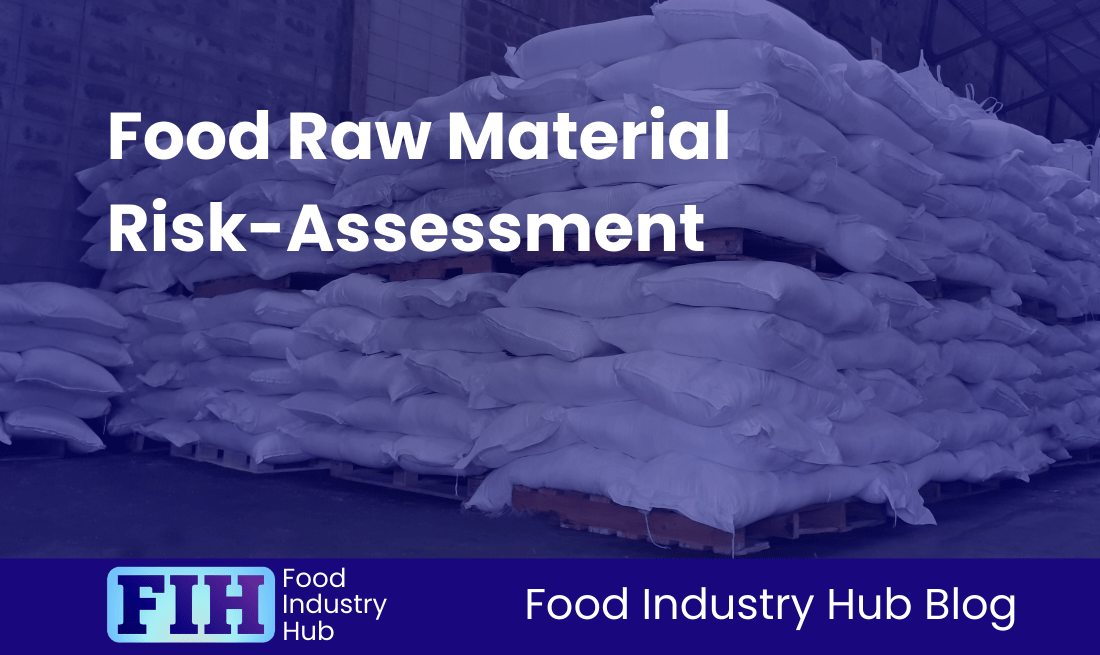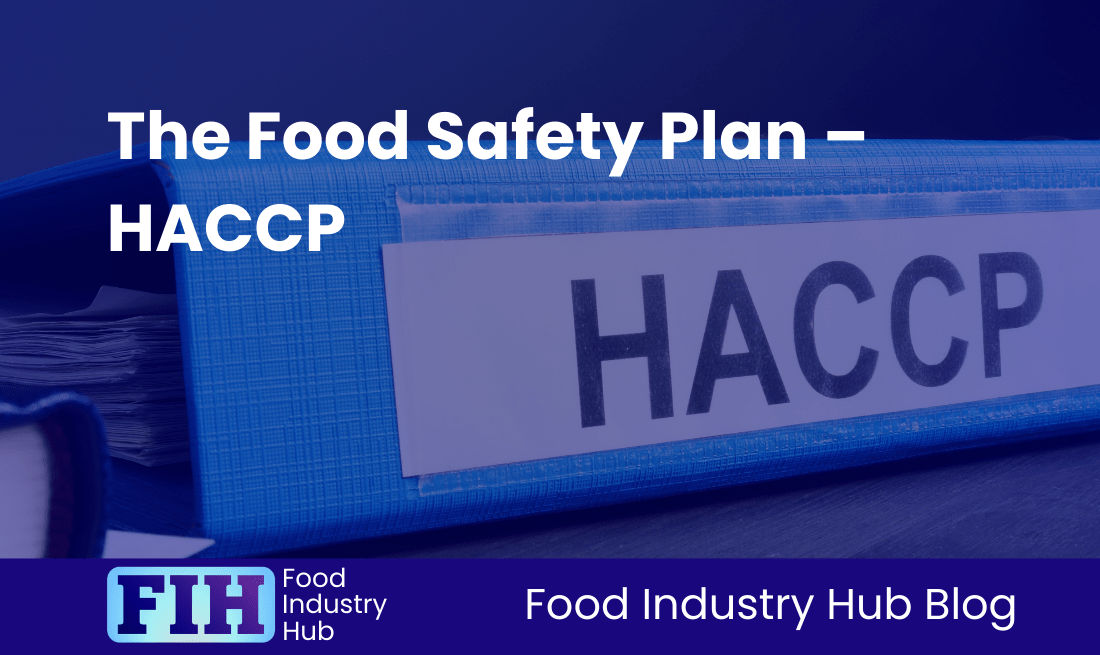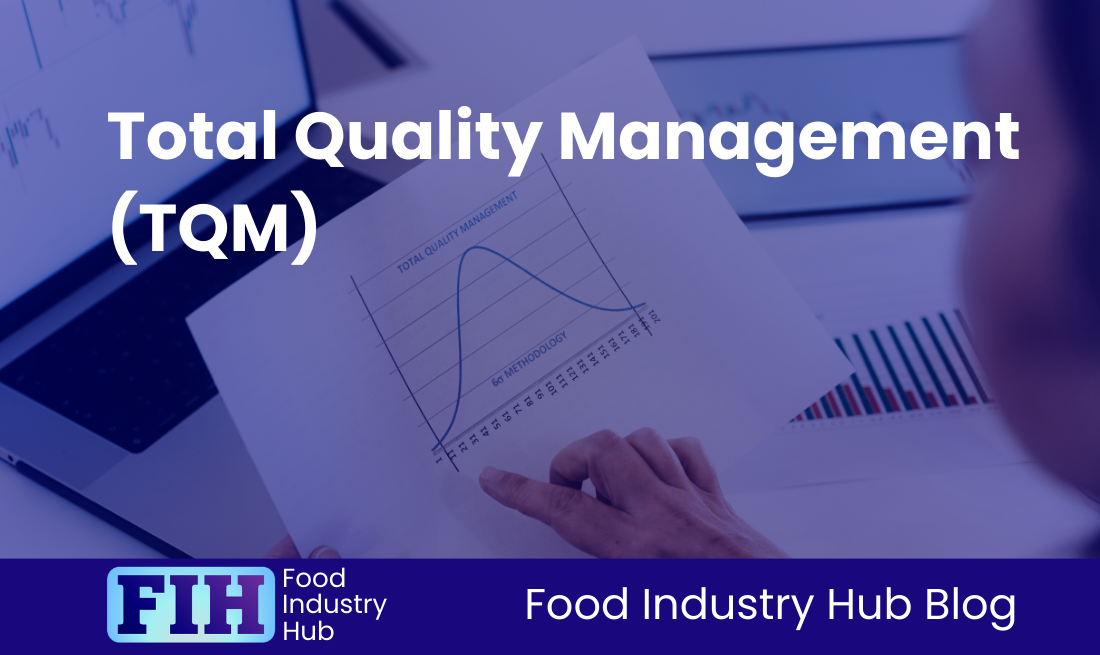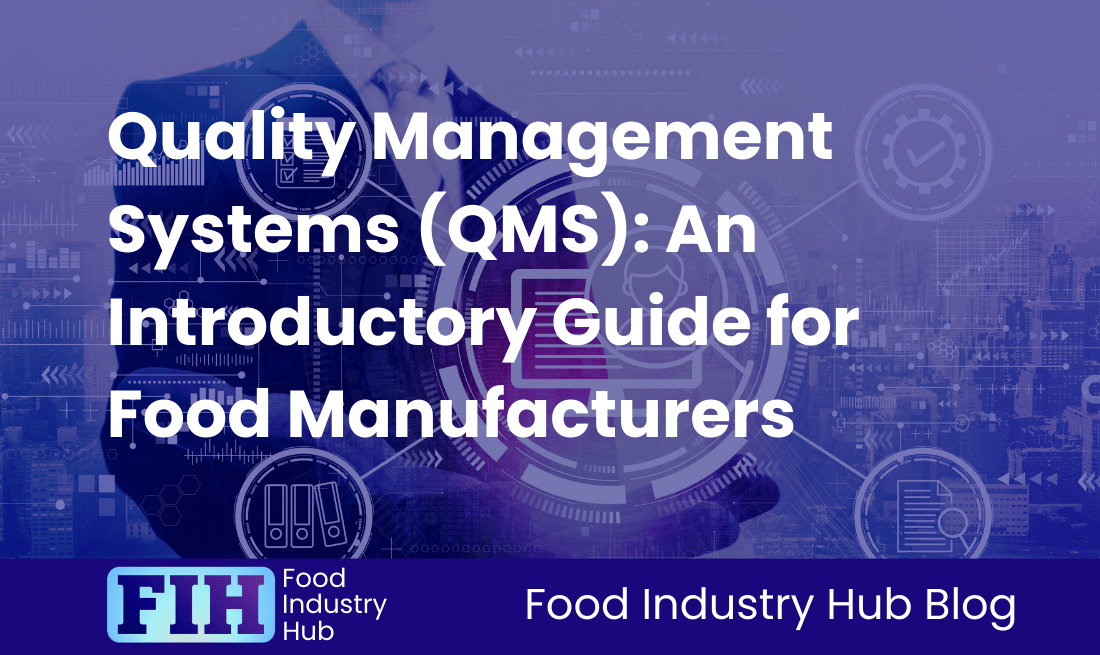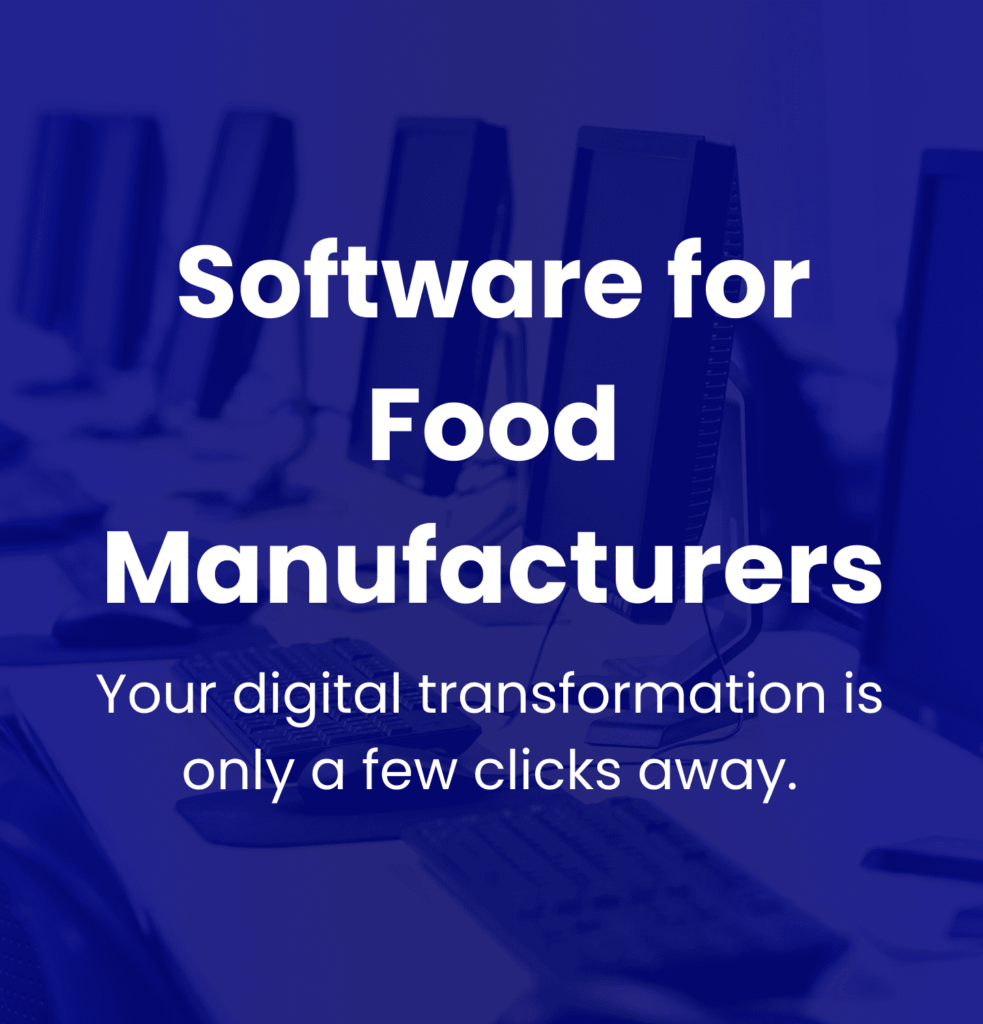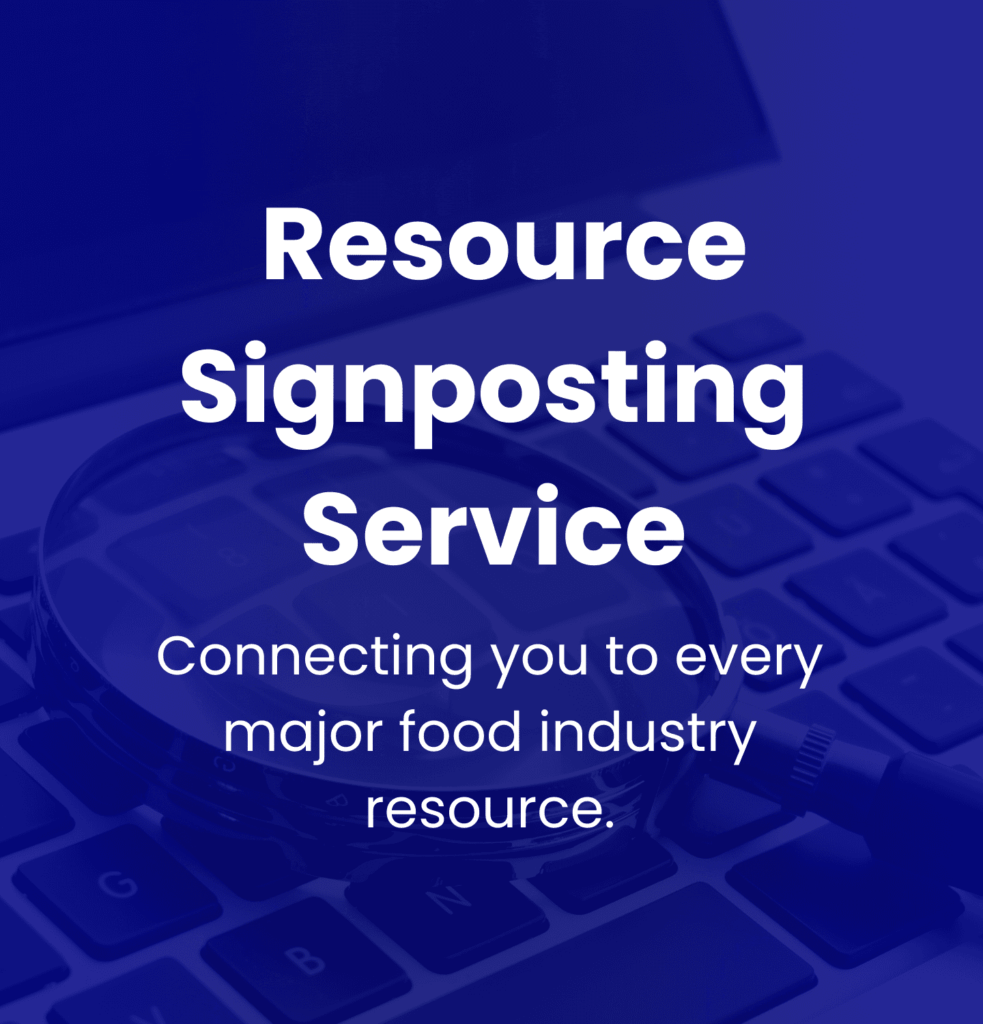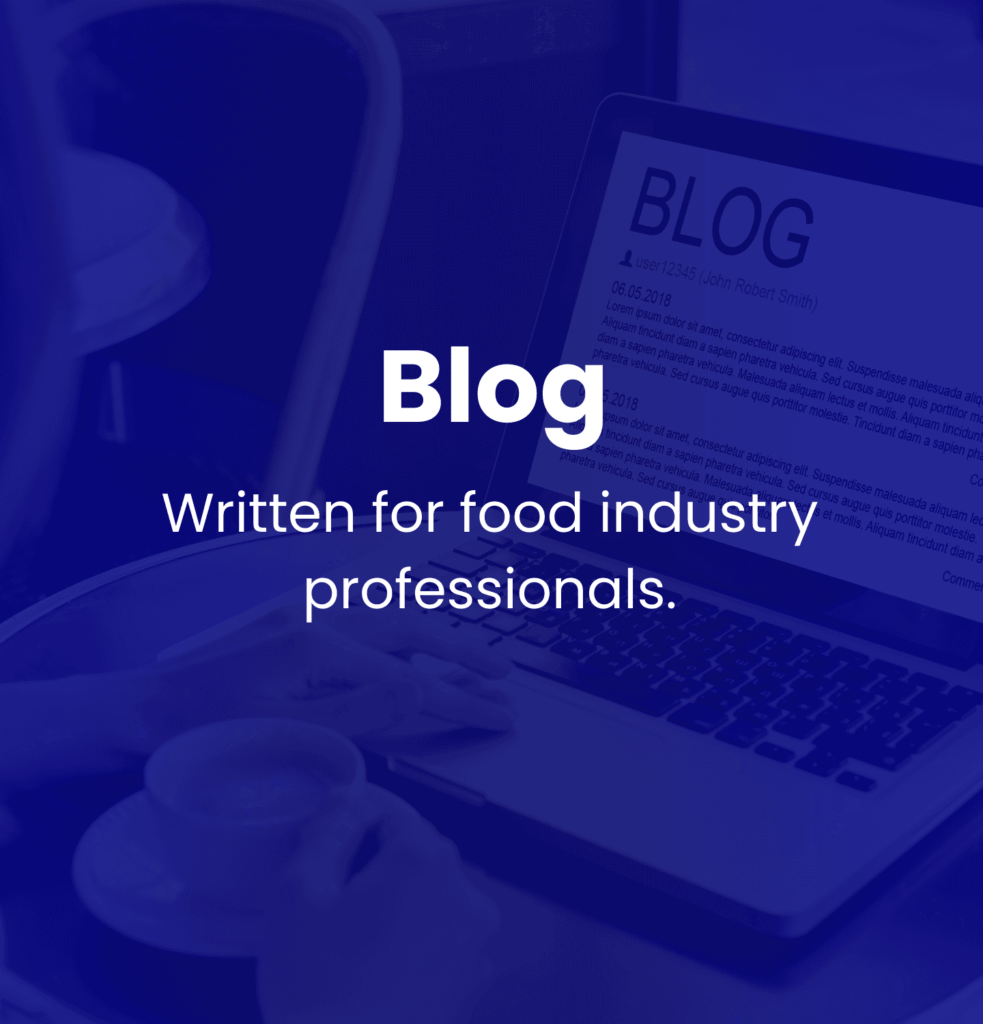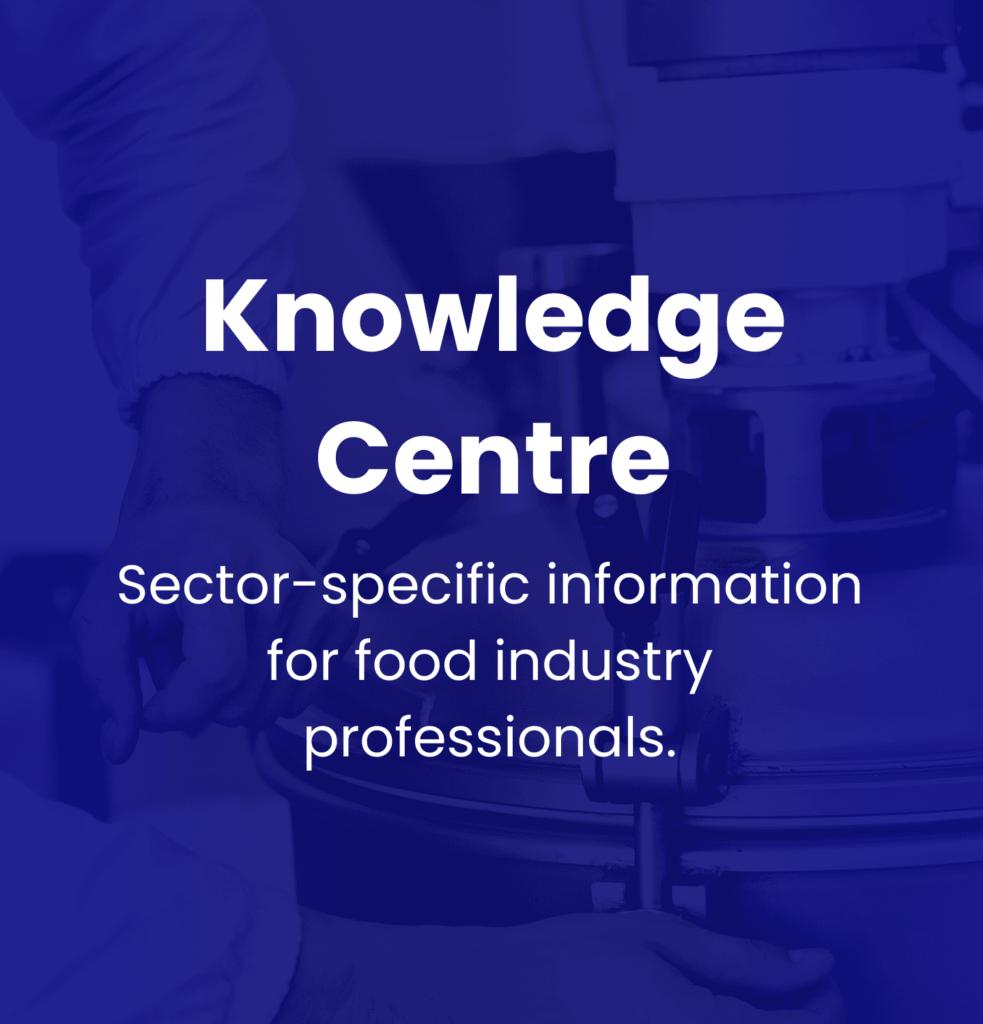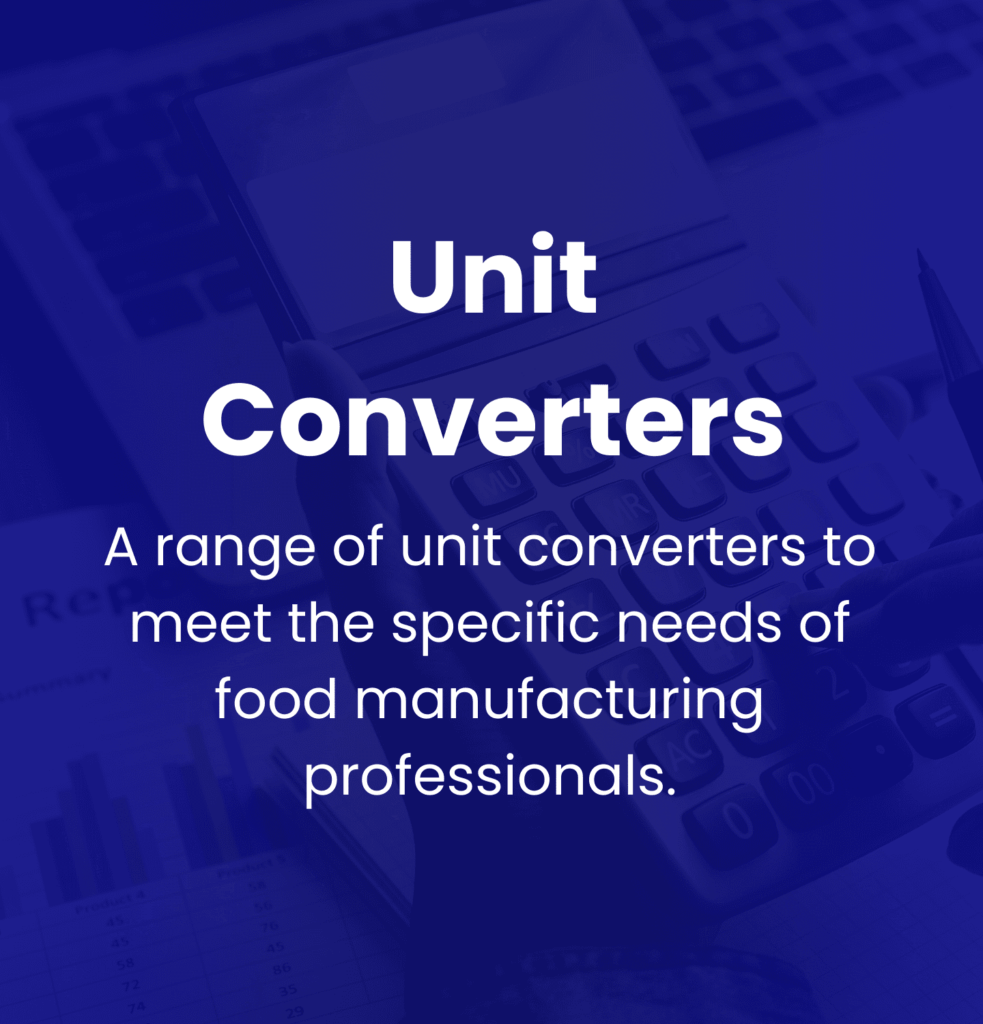Know: New Product Development (NPD)
Contents
Introduction
Key Takeaways
The NPD Process and its Significance in Food Manufacturing
Strategies for Integrating Food Safety in NPD
Navigating Regulatory Compliance in NPD
Influence of Technological Innovations in NPD
Identifying and Overcoming Challenges in NPD
Post-Launch Monitoring and Continuous Improvement
Conclusion
Introduction
Importance of New Product Development in the Food Industry Amidst Changing Consumer Demands and Market Regulations
New Product Development (NPD) is a key activity within the food industry, given the evolving nature of consumer preferences and tightening market regulations. Today’s consumers make their choices based on a variety of factors, including health benefits, convenience, sustainability, and ethical sourcing. The shift towards functional foods and plant-based products that cater to health-conscious and environmentally responsible consumers enhances the need for continuous innovation from food manufacturers to retain relevance and competitiveness.
On top of this, regulatory frameworks, such as the High Fat, Sugar and Salt (HFSS) laws, pose a challenge to manufacturers to either reformulate existing products or to develop new ones that foster healthier consumer choices. Adherence to these regulations not only meets legal requirements but is also imperative in safeguarding brand reputation and consumer trust.
Defining New Product Development and Its Role in Promoting Food Safety and Quality
New Product Development refers to the thorough process by which innovative ideas for food products are transformed into market-ready items. This process includes several stages including conceptualisation, market research, formulation, consumer testing, processing and finally, commercialisation. An essential facet of NPD is its concentration on elevating food safety and quality, a mandate in the creation of products that meet both consumer and regulatory demands.
Applying strict testing standards, sourcing quality ingredients and conforming to established safety guidelines, NPD ensures a reduction in risks associated with contamination, spoilage, and allergens in new products. The use of technological advancements like artificial intelligence and data analysis further refines the development cycle, resulting in significant improvements in the safety and uniformity of food products.
The Influence of Food Safety Regulatory Frameworks on NPD
Food safety regulatory frameworks considerably affect NPD processes and their results. These structures provide fundamental guidelines that food manufacturers must conform to ensure product safety. Abiding by these regulations promotes innovation as manufacturers are compelled to both create and reformulate products to align with legal standardswhile also implementing clear product labelling.
Adhering to regulatory requirements also encourages the uptake of cutting-edge preservation technologies and safer packaging procedures, enhancing shelf life and reducing risks of contamination. So, these structures not only protect consumers but also encourage the food industry towards greater quality and accountability, necessities for successful NPD.
Key Takeaways
The New Product Development (NPD) process undertakes essential stages such as ideation, project scoping, prototype development, consumer testing, optimisation, and market launch. Every stage is instrumental in guaranteeing that products do not just meet market demands but also comply with safety regulations.
Significance of Cross-Functional Teams
Outcomes throughout the NPD process heavily depend on cross-functional teams. Teams that bring together diverse functions like marketing, research and development, quality assurance, and manufacturing can pool their expertise, fostering a more comprehensive approach from beginning concepts to ultimate product launches. This cooperative effort can enhance the product’s design, functionality, and overall appeal to customers.
Consumer Testing
Consumer testing holds a distinct place within the NPD process because it serves to validate products for aspects such as taste, texture, and acceptability. This testing provides considerable feedback, which shapes refinements before a product’s introduction into the market, assisting in the detection of potential safety hazards, including allergens, at an early stage.
Regulatory Compliance
Regulatory compliance is the foundation for successful product introductions in the food sector. Maintaining safety standards not only reduces risks associated with product recalls but also safeguards brand reputation and consumer trust. Engagement with regulatory frameworks underpins the guarantee that every product meets legal obligations before it reaches consumers.
Emerging Technologies
Innovations like artificial intelligence (AI) and the Internet of Things (IoT) are significantly transforming NPD processes. AI enhances the capabilities of data analytics and predictive modelling related to consumer preferences, while the IoT eases the real-time monitoring of production quality, subsequently leading to improved operational efficiency and product safety.
Challenges in Reformulation
Another point to consider is the reformulation of established products, which can pose considerable hurdles, especially when the aim is to preserve both safety and consumer appeal. Overcoming these hurdles requires a delicate balance, guided by meticulous testing and validation, ensuring compliance with evolving standards and expectations.
A comprehensive understanding of New Product Development (NPD) is essential for food manufacturers aiming to innovate while assuring safety, regulatory compliance, and market readiness.
Food Industry Hub Management Systems can significantly boost the effectiveness of your food safety and quality management system, leading to improved confidence and elevated quality assurance throughout your operations.
The NPD Process and its Significance in Food Manufacturing
New Product Development (NPD) is a structured approach in food manufacturing that guides the journey from innovative ideas to market-ready products. This systematic process is essential for enhancing business relevance in a competitive market. The NPD process is used to respond to evolving consumer demands, such as the drive for health, sustainability, and convenience while also maintaining adherence to necessary safety and regulatory guidelines. The careful management of the NPD process can improve a company’s positioning and responsiveness to emerging trends, including the rise of plant-based diets and the clean-label movement.
Primary Stages of NPD
The NPD process includes distinct, yet interconnected stages, each of which makes significant contributions to the overall product:
- Ideation: The process commences with the generation of creative ideas informed by various factors such as market research, feedback from consumers, technology advancements and industry trends. It is important to ensure that these ideas are aligned with both consumer requirements and the company’s ability to realise them. For example, the growth of the plant-based protein trend, has inspired manufacturers to experiment with new formulations.
- Project Scoping: After ideation, it is time to outline project objectives, assess feasibility, and identify resource needs. Clear alignment of goals with market demands and regulatory restrictions is integral at this stage. Project timelines may vary considerably based on the complexity of the product, ranging from 3 months for minor amendments to as much as 3 years for completely new product categories.
- Prototype Development: Initial product samples are developed using the predetermined project scope. Ingredients are chosen, recipes formulated, and pilot testing often follows to refine sensory attributes and evaluate manufacturing methods. Considerations such as ingredient availability, nutritional content, and shelf life play a key role during this stage as they influence the ultimate success or failure of the product.
- Consumer Testing: At this stage, engagement with potential customers is extremely important. Feedback regarding taste, appearance, and overall appeal is gathered through sensory evaluations and focus groups. This feedback aids in identifying necessary modifications that may enhance consumer approval prior to the product’s launch in the market.
- Optimisation: Informed by insights from consumer testing, refinements to the product are performed. This may be a case of reformulation or packaging adjustments to ensure that the final product surpasses market expectations and complies with safety standards. For example, real-time feedback may drive quality improvements or assist in adhering to food safety standards.
- Market Launch: The final stage involves the product’s introduction to the market. Success depends on a coordinated marketing strategy, effective distribution channels, along with constant monitoring of consumer acceptance and product performance. Successful launches are often implemented in phases to manage risks efficiently while interpreting consumer responses.
Each stage is influenced and interconnected by the previous one, reinforcing the importance of addressing issues promptly to prevent downstream challenges. For example, insights gathered during the development of prototypes can inform the consumer testing phase, which directly affects the optimisation stage, thereby ensuring a smoother market introduction.
Incorporating Market Research in NPD
Market research is integral to the NPD process, offering vital insights into consumer preferences, current trends, and competitive dynamics. Understanding what consumers want—such as healthier ingredients or ethical sourcing—can empower manufacturers to create products that resonate with their intended market. Several effective methods for product concept validation include:
- Surveys: They provide quantitative data on consumer preferences, gauging purchase intent and desirable product features. Techniques such as online polls can yield important insights into consumer behaviour and priorities.
- Focus Groups: Such sessions help manufacturers understand consumer reactions to new product ideas, collecting qualitative feedback that pinpoints areas for improvement or enhancement.
Embedding robust market research throughout the NPD process significantly reduces the likelihood of product failure, ensuring that new creations effectively align with genuine consumer needs.
The Power of Cross-Functional Teams in NPD
The success of NPD initiatives relies heavily on collaboration within diverse functional areas of a food manufacturing company. Each department brings unique expertise:
- Research & Development (R&D): R&D is responsible for driving innovation by formulating and developing new product ideas that align with market needs.
- Marketing: This team transforms consumer insights into actionable strategies that help shape product positioning and branding.
- Quality Assurance (QA): QA maintains high production standards throughout the process and ensures compliance with safety regulations.
- Supply Chain: Responsible for managing ingredient sourcing and production logistics, this team ensures efficiency and cost-effectiveness.
The cohesion of these teams heightens product safety and quality, but also nurtures innovation and minimises time-to-market. Effective collaboration across these disciplines ensures that every aspect—from concept development to market delivery—is in sync, reducing risks and optimising results.
Consumer Testing and Its Role in Approval
Consumer testing is a significant component of the NPD process, pivotal for validating the acceptability and safety of new food products. The following mechanisms can be employed:
- Sensory Evaluations: These tests are conducted to measure consumer responses to taste, aroma, texture, and overall satisfaction. Techniques such as preference tests and descriptive analysis are used to refine product attributes based on received feedback.
- Obtaining Consumer Feedback: Gaining insights from consumers is integral for identifying potential safety issues and necessary improvements before launching a product. This proactive approach assists in product refinement and also reduces the likelihood of recalls or adverse events.
Through thoughtful execution of these interlinked facets of the NPD process, food manufacturers are empowered to create innovative, safe, and successful products that meet both industry standards and market demands.
Strategies for Integrating Food Safety in New Product Development (NPD)
Adhering to food safety requirements is an intrinsic part of the development process. It supports adherence to regulatory standards and helps uphold consumer trust. To achieve this, an integrated approach is needed, involving different departments such as research and development, quality assurance, and marketing. With this approach, food safety considerations find themselves incorporated throughout all stages of product development, thus reducing the potential risks of foodborne illnesses and preserving the brand’s image. Key to this strategy is the role of Preventive Controls Qualified Individuals (PCQIs) who manage the implementation of preventive measures and ensure compliance with laws such as the Food Safety Modernization Act (FSMA).
Applying innovative technologies can significantly improve safety monitoring. Processes can be streamlined with the utilisation of AI-driven analytics and automation, enabling constant quality checks throughout production – something that is progressively essential for maintaining high standards amidst rigorous regulatory needs [Source: AIB International].
Benefits and Methods of Early Hazard Assessments
Why Early Risk Analysis and HACCP Matter
Undertaking early hazard assessments is indispensable in proactively pinpointing risks tied to food safety. A preventive methodology, the Hazard Analysis and Critical Control Points (HACCP) system, emphasises control points crucial during the production process. Earlier risk analysis empowers companies to set up comprehensive safety protocols, considerably lowering the chances of safety lapses that could lead to costly product recalls or transgressions of regulatory norms.
HACCP implementation involves a number of steps including identification of potential hazards, defining critical limits and establishing tracking processes to uphold safety standards. This active approach serves as more than just a regulatory necessity – it helps to build consumer confidence by maintaining transparent safety procedures. With robust product safety protocols covering all stages of development, businesses can swiftly adjust to arising risks within the production environment.
Importance of Validating Safety Protocols in NPD
The Practice of Safety Validation in Product Development
Checking safety protocols throughout the new product development process is imperative to ensure compliance with industry criteria. This validation process necessitates regular microbiological safety testing to ensure products are devoid of harmful pathogens and contaminants. The integration of these testing procedures at different stages of product development ensures the efficiency of safety measures and meets regulatory demands.
Microbiological testing plays a significant role in the product lifecycle, allowing for adjustments based on test results before bringing products to market. This sustained validation helps to uphold high product quality and consumer safety, consequently boosting the brand’s reputation.
The Need for Continuous Monitoring Post-Launch
Formulating Strategies for Post-Market Surveillance Systems
Upon launching a product, continuous monitoring becomes indispensable for upholding its quality and safety. Establishing post-market surveillance systems allows for insights into product performance and enables swift responses to any safety-related matters that might arise. These systems necessitate the real-time tracking of feedback from end-users and any divergences observed during product usage, critical elements for proactive risk management.
Integrating Internet of Things (IoT) technology and data analytics platforms can cast a new light on safety monitoring. IoT sensors can provide real-time data about storage and transportation conditions, while analytics can uncover trends that may indicate potential safety worries before they spiral into serious problems. This data-driven decision-making enhances the response speed of modern food manufacturing practices and helps sustain high safety standards even post product launch.
Sign-up for the Food Industry Hub Mail Service
We regularly produce new content for food industry professionals, and the Food Industry Hub Mail Service is the best way to stay up to date with the latest additions.
Signup today to be added to the Food Industry Hub mailing list.
Navigating Regulatory Compliance in NPD
Understanding UK Food Safety Regulations
In the UK, aligning operations with the stipulations of the Food Safety Act 1990 is an unavoidable obligation for food manufacturers. This legislation reinforces that all food products must be safe for consumption and accurately labelled. It delineates significant responsibilities for food businesses, such as maintaining superior hygiene and executing effective safety management. More granular legislation, like the Food Information to Consumers Regulation (FIC) (EU) No. 1169/2011, remains in force. This regulation stipulates precise requirements for labelling, including ingredient disclosure, nutritional information and allergen warnings.
Regulations like these shape the development pathway of new products in a substantial way. The FIC, for instance, insists that allergens be clearly indicated in ingredients lists for easy identification by consumers. This proviso has practical implications. Methodical food safety evaluations, which also include microbiological risk-assessment, need to be conducted early during the new product development (NPD) phases to ensure safety and compliance. This approach helps prevent potential callbacks and compliance issues further down the line.
Starting compliance initiatives from the ideation stage leads to improved product formulations that not only comply with regulatory standards but also correspond with customer expectations. Businesses that postpone compliance checks until the later stages may face expensive reformulations from safety assessments or labelling shortcomings.
Comparative Compliance Perspectives in the EU and US
Regulatory compliance can be tricky across jurisdictions, given the varying frameworks in the UK, EU, and the US. In the EU, the safety of all circulated food products is overseen by the General Food Law Regulation (EC) No 178/2002, with an emphasis on preventive measures in food safety. Among these are pre-market assessments for innovative food products, managed by the European Food Safety Authority (EFSA). Meanwhile, the US has the Food and Drug Administration (FDA) supervising food safety under the Food Safety Modernization Act (FSMA). Unlike the EU’s cautionary principle, the US prioritises a risk-based approach to food safety.
This has practical implications as food manufacturers may find that market introductions are quicker under FDA-recognised GRAS (Generally Recognised as Safe) status. However, this comes with substantial risks related to litigation if a product is later found to be unsafe. There are noticeable differences in labelling necessities between markets. For instance, the EU requires labelling for 14 specific allergens, whereas the US requires labelling for nine allergens. The impact of these disparities on food manufacturers targeting international markets can be significant. To meet the diverse regulatory demands of each market, manufacturers may need to distinguish their formulations and packaging. This potentially necessitates engaging compliance specialists early in the NPD process to effectively steer through these intricacies.
The Role of Proper Labelling in Compliance
Achieving accurate and informative labelling is not only integral for regulatory compliance but is also key to consumer safety. Incorrect labelling can result in serious consequences, such as product recalls, legal implications, and damage to brand reputation. Recalls related to allergens amounted to a significant proportion of food recalls in recent years, thereby reinforcing the requirement for careful scrutiny of labelling practices.
To uphold compliance, food manufacturers may find value in introducing integrated labelling systems that enable effective management of ingredient data and allergen information. Automation of compliance checks can simplify labelling processes and cut down the risks linked to human error. Continuous vigilance on regulatory changes is essential; manufacturers must stay agile in updating their labelling practices in accordance with the evolution of regulations. It’s important for products to meet safety standards and provide transparent, consumer-friendly information. By concentrating on appropriate label management during the NPD cycle, manufacturers can produce goods that uphold both regulatory compliance and consumer safety, ultimately building brand trust and loyalty in a highly competitive market.
Influence of Technological Innovations in NPD
Technological advancements are reshaping the landscape of New Product Development (NPD) in the food manufacturing industry. These advancements enhance process efficiencies and product quality, meeting ever-changing consumer expectations. This section reviews significant technological innovations, with a focus on Artificial Intelligence (AI) and advanced processing techniques.
Harnessing Artificial Intelligence in Formulation
Artificial Intelligence (AI) is transforming the creation of food products by optimising ingredient selection and predicting product performance. AI systems can evaluate extensive datasets, recognising patterns and interactions that contribute to better ingredient combinations in line with consumer tastes. This ability reduces dependence on conventional trial-and-error methods, enhancing efficiency and shortening development cycles. For instance, AI-driven strategies have been documented to reduce product development time by about 50%, by streamlining the formulation process and facilitating quicker decision-making [Source: IFT].
AI-enabled predictive analytics give manufacturers the opportunity to simulate a product’s performance over time, improving shelf life and gauging consumer acceptance before a product hits the market. This forecasting ability under various conditions ensures identification of potential issues at the earliest, securing investments and maximising returns. Moreover, AI promotes the rising trend of personalised nutrition by facilitating the development of customised products in sync with individual health needs and dietary choices, serving a burgeoning market for tailored food solutions.
Advantages of Advanced Processing Techniques in NPD
Innovative food processing technologies considerably improve product quality and extend shelf life. For instance, High-Pressure Processing (HPP), an innovative method, deploys high pressure to neutralise pathogens whilst maintaining the nutritional and sensory attributes of the food. This non-thermal process appeals to consumers seeking minimally processed foods and contributes to the reduction of food waste.
Other cutting-edge techniques such as pulsed electric fields (PEF) and ultrasound processing improve food safety while optimising nutrient retention and product quality. Embracing these advancements is becoming increasingly important as consumers demand healthier and fresher food products. These techniques empower manufacturers to rise to the food safety challenge while aligning with changing consumer preferences for quality and sustainability.
Technological innovations in NPD are not just enhancing the production process; they are also contributing towards a more sustainable and resilient food manufacturing environment, broadening the potential for innovative and consumer-responsive product offerings.
Identifying and Overcoming Challenges in NPD
Developing new products in the food manufacturing industry is a multifaceted process, filled with challenges. From complying with ever-changing regulations to navigaing supply chain uncertainties, the path to successful New Product Development (NPD) is not straight-forward. This section explores some common obstacles and provides insights for food manufacturers to handle these challenges effectively.
Common Obstacles in NPD Processes
Teams undertaking NPD often find themselves grappling with numerous complexities that could hinder product innovations and delay product launches. Regulatory compliance represents a significant hurdle, as food safety and labelling regulations are in a constant state of flux, requiring products to stay in step with legal demands. Sustainable practices, such as sourcing environmentally-friendly ingredients, waste reduction, lowering carbon footprints and minimising ultra-processed foods (UPF) usage, add further difficulty layers to product development. Sourcing consistent, high-quality raw materials amid geopolitical turbulence and environmental uncertainties can pose remarkable risks. With Fconsumer preferences quickly leaning towards organic and healthier options, NPD processes need to be agile and adaptable. Challenges are also faced internally, as teams often encounter difficulties with supplier collaboration and making changes during the NPD cycle [Source: Ife Manufacturing].
Reformulating Established Products
One of the significant challenges in food manufacturing is reformulating existing products to comply with updated regulatory standards, while still appealing to consumers. The task involves striking a balance between regulatory compliance, taste, texture, and broad consumer acceptance. Reformulation may need to meet new ingredient restrictions, nutritional targets, and allergen labelling regulations without compromising the product’s sensory attributes. As health-based concerns increase, ingredient substitutions become necessary, requiring alternatives that don’t affect product functionality. Changes in product formulation risk altering brand identity, and there’s a chance that a redesigned product may not meet consumer expectations, thus leading to reduced consumer loyalty. The need for continual innovation, driven by evolving regulatory demands for reducing sodium, sugar, or artificial additives, requires ongoing adjustments to product formulations [Source: MDPI].
Supply Chain Vulnerabilities
In NPD within food manufacturing, supply chain risks are a significant point of vulnerability. Geopolitical issues like trade disruptions, tariffs, and political instability can affect the availability and cost of ingredients. Climate change-associated environmental challenges threaten the consistency of raw material production due to impacts like droughts and floods. Ensuring ingredient quality and traceability, which are essential for product safety and compliance, also add complexity to the challenge. Companies need to implement robust resilience strategies, such as diversifying suppliers, opting for local sourcing when feasible, and applying strategic inventory management policies. To strengthen supply chain resilience further, sustainable sourcing policies bolstered by supplier collaborations and advanced technologies that effectively monitor supply disruptions should be adopted.
Maintaining Safety During Scaling
Moving production from pilot to full commercial volumes can introduce substantial safety challenges. Managing these effectively is essential to prevent instances of food safety breaches. The complex nature of large-scale equipment and facilities warrants strong sanitation protocols to avert contamination risks. Quality control has to be vigorously maintained, involving surveillance of manufacturing parameters during scale-up to prevent any compromise on microbial safety or product consistency. Implementing comprehensive quality assurance, including expanded testing and inspection protocols for larger batch sizes, is important to ensure the finished product’s safety. Quality assurance, production, and R&D teams need to work together to recognise and tackle emerging hazards from changes in production methods. Any lapse in maintaining safety during scaling may lead to recalls, regulatory actions, and a loss of consumer trust, indicating the need for considerable investments in high-standard hygiene programmes and quality systems for a successful scale-up operation.
Understanding and addressing these challenges effectively would pave the way for food manufacturers to innovate, comply with regulations, and compete with confidence in the rapidly evolving food industry, while maintaining the safety and quality of new products.
Post-Launch Monitoring and Continuous Improvement
Upholding product quality and safety following a product’s introduction to the market is integral to New Product Development (NPD). Building an effective strategy that includes post-launch monitoring helps products remain relevant and in line with safety regulations.
Steady quality assurance procedures are key, going beyond pre-market assessments. When performance metrics are regularly monitored, the gathered data allows for prompt adjustments. Essentially, this diligent practice helps decrease risk and bolsters the trust consumers place in the product.
Integrating Consumer Feedback
Mechanisms for Collecting and Analysing Consumer Feedback
Consumer feedback plays a vital role in optimising products post-launch. Methods for gathering this feedback cover a broad spectrum, from traditional surveys to advanced social listening platforms. By utilising such means, valuable consumer insights can be obtainted to assist in informing product improvements. Direct channels of interaction and social media platforms aid companies in capturing and effectively analysing consumer sentiment, identifying strengths and areas for improvement.
The importance of a nimble response cannot be overstated, as adapting to consumer feedback helps ensure the longevity of a brand and align it with the market. Companies are increasingly utilising advanced analytics and sentiment analysis tools to enhance their understanding of consumer expectations and promptly address any emerging concerns. This kind of proactive approach not only ensures alignment of products with current market trends, but also staves off the potential risks associated with negative consumer feedback.
Iterative Quality Improvements
Framework for Continuous Quality Enhancement
The adoption of a thought-out structure for continuous quality enhancement should incorporate systematic evaluation of all performance metricss – including quality assessments and indications of consumer satisfaction. It’s beneficial to develop post-launch quality management processes that adhere to industry standards like ISO and IATF, enabling manufacturers to regularly supervise their products and maintain safety conformity. Introducing AI-powered quality control systems can bolster predictive precision, identifying potential issues before they impact the integrity of a product.
Iterative quality improvements must keep in step with changing consumer preferences and safety guidelines. Gathering and analysing consumer feedback not only informs product refinements but also delivers regulatory insights, aiding in compliance with health standards. Such alignment notably lowers the risk of product recalls and concurrently boosts consumer confidence in food safety.
Food manufacturers can deftly navigate the complexities of post-launch monitoring and continuous improvement by integrating consumer engagement and data-driven insights into their NPD strategies. Such an approach helps ensure product quality and safety while also maintaining a responsive and dynamic market presence, a necessity for flourishing in the highly competitive landscape of the food industry.
Conclusion
In the food manufacturing industry, the success of new product development (NPD) is closely linked to the effective synchronisation of innovation, food safety, and regulatory compliance. This balance is necessary when creating goods that adhere to regulatory guidelines while simultaneously scaling new heights in terms of innovation and meeting evolving consumer preferences. The integration of comprehensive hazard analysis and critical control points during the product creation phase guarantees the production of innovative and safe products.
A Glimpse into the Future: The Impact of Technological Progress on NPD
Technological evolutions such as artificial intelligence (AI), machine learning and automation are redefining NPD in the food industry. These technologies are enhancing research and development processes, enabling companies to streamline products’ formulation, make the best use of ingredients combinations, and anticipate consumer preferences accurately. Mondelez International, for instance, has effectively employed AI to innovate and fine-tune recipes, thereby significantly boosting efficiency and market responsiveness. The rise of big data analytics and real-time monitoring systems further makes for agile decision-making, facilitating swift adjustments based on consumer feedback and market trends. As the adoption of such sophisticated technologies increases in the industry, it is expected that NPD will transform into a swifter, more cohesive, and data-centric process, stressing the need for consistent safety protocols and compliance at all stages of development.
Sustainability and Resilience: Addressing Market and Regulatory Challenges
Growing consumer expectations for environmentally friendly products are making sustainability and resilience increasingly important in food manufacturing. Understanding this, manufacturers are looking more towards circular economy principles, integrating practices that minimise waste and lessen their operations’ environmental impact. These practices include the incorporation of upcycled ingredients into product recipes, which not only supports environmental sustainability but also appeals to health-conscious consumers. Additionally, manufacturers are focusing on designing robust supply chain strategies, like dual sourcing and local supplier partnerships, to adapt to geopolitical risks and climate variations affecting ingredient availability. Aligning NPD strategies with sustainability goals will assist companies to stay updated with changing regulatory mandates and beef up their competitive edge in a market that increasingly values responsible sourcing and ethical operations.
In summary, successful NPD in food manufacturing hinges on efficiently balancing innovation, safety, regulatory, and technological advances with a concrete commitment to sustainability. Embracing these interconnected components will enable food manufacturers to thrive in a complex and swiftly evolving ecosystem, effectively serving the needs of both consumers and regulatory authorities.
About The Food Industry Hub Knowledge Centre
The Food Industry Hub knowledge centre delivers informative content on a variety of topics pertinent to the food manufacturing industry.
You can return to all topics by clicking here.
From The Food Industry Hub Blog
Expanding on this topic with related content from our blog.

